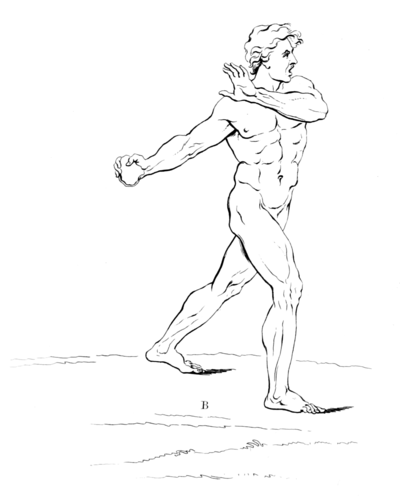A Treatise on Painting/Chapter 153
Chap. CLIII.—Of the Motion of Man, Plates XX. and XXI.

London. Published by J. Taylor High Holborn.

London. Published by J. Taylor High Holborn.
in action and power. The first in point of vigour is A. The second is B. But A will throw his weapon farther than B, because, though they seem desirous of throwing it to the same point, A having turned his feet towards the object, while his body is twisted and bent back the contrary way, to increase his power, returns with more velocity and force to the point to which he means to throw. But the figure B having turned his feet the same way as his body, it returns to its place with great inconvenience, and consequently with weakened powers. For in the expression of great efforts, the preparatory motions of the body must be strong and violent, twisting and bending, so that it may return with convenient ease, and by that means have a great effect. In the same manner, if a cross-bow be not strung with force, the motion of whatever it shoots will be short and without effect; because, where there is no impulse, there can be no motion; and if the impulse be not violent, the motion is but tardy and feeble. So a bow, which is not strong, has no motion; and, if it be strung, it will remain in that state till the impulse be given by another power which puts it in motion, and it will shoot with a violence equal to that which was employed in bending it. In the same manner, the man who does not twist and bend his body will have acquired no power. Therefore, after A has thrown his dart, he will find himself twisted the contrary way, viz. on the side where he has thrown; and he will have acquired only power sufficient to serve him to return to where he was at first.
